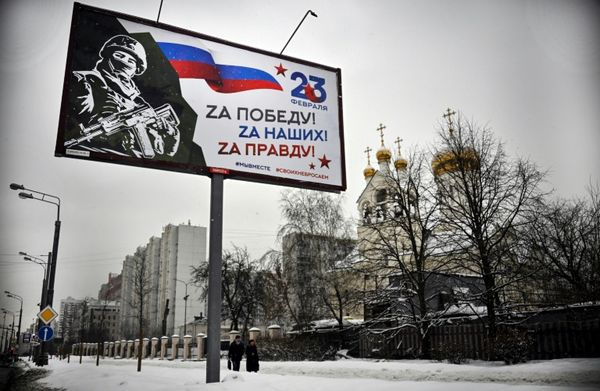
State-owned Oil and Natural Gas Corporation (ONGC) and Oil India Ltd (OIL) will be paid a minimum or floor price $4 per million British thermal unit and a cap or ceiling price of $6.5 as against the current rate of $8.57, according to three sources told news agency PTI.
The floor and ceiling price will be applicable for five years although the initial thought was to keep it for three years, they said adding the ceiling price will have an annual escalation clause.
The escalation being suggested $0.5 per mmBtu annually with no change pricing for first two years or a $0.25 per mmBtu annual escalation for five years.
The escalation will be adjusted to the foreign exchange rate, they said.
The panel, which was tasked with suggesting a "fair price to the end-consumer" while ensuring a "market-oriented, transparent and reliable pricing regime for India's long-term vision for ensuring a gas-based economy", has favoured two different pricing regimes, sources said.
For the legacy firms ONGC and OIL -- where the cost has long been recovered and which are currently governed by a formula that uses rates in gas-surplus nations such as the US, Canada and Russia -- the committee is recommending a floor or minimum base price and cap or ceiling rates.
This would ensure that prices do not fall below the cost of production, as they did last year, or do not spike to record levels as currently.
Gas from legacy fields is sold to city gas distributors who had to raise rates of CNG and piped cooking gas by over 70 per cent after prices went up from $2.90 per million British thermal unit till March to $6.10 in April and further to $8.57 last month, reflecting a surge in global rates. This rise in rates, which narrowed the gap between CNG and polluting diesel, had prompted the review.
Sources said the city gas will get top priority in the allocation of the gas from legacy fields, called APM gas. The sector will be in the 'no-cut' category, meaning supplies to other consumers will be cut first in case of a decline in production.
For the gas from difficult fields such as those lying in deepsea or which are in high-pressure, high-temperature zones, the committee is suggesting not tinkering with the existing mechanism of paying them higher rates based on a different formula to compensate for the greater risk and cost involved, sources said.
This would ensure that explorers, who are seeing a surge in the cost of services due to the spike in global energy rates, are not put at a disadvantage.
This way the concerns over investments in exploration and production (E&P) being hit would also be addressed, they said, adding that market-driven pricing would also encourage new investments and attract global players.
KG-D6 fields of Reliance Industries Ltd and its partner bp plc of the UK are governed by the pricing formula for difficult fields. Rate for difficult fields from October 1 is $12.46 per mmBtu.
The panel headed by former planning commission member Kirit S Parikh is in the final stages of finalising its report. It would be submitted to the government at any time, they said.
The oil ministry will process the recommendations before moving them to the Cabinet for approval for changes in the existing gas pricing regime.
Natural gas is a fossil energy source that is formed deep beneath the earth's surface. It is used to generate electricity, produce fertiliser and petrochemicals, converted into CNG to run automobiles and piped gas to household kitchens for cooking and heating. It is also used in making glass, steel, cement, bricks, ceramics, tile, paper, food products, and many other commodities as heat source.
Its prices remained docile till March 2022 but have shot up in recent months, raising the cost of production of user industries in general and city gas operators that sell CNG to automobiles and piped cooking gas to households, in particular.
To keep rates under check so that they do not add fire to the already high inflation, the government formed a committee to review the way prices of gas produced in India are fixed.
The panel includes representatives of the gas producers association as also state-owned producers ONGC and OIL, a member from private city gas operators, state gas utility GAIL, a representative of Indian Oil Corporation (IOC) and a member from the fertiliser ministry.
In the panel meetings, the producers insisted on complete market freedom as had been guaranteed in the contracts they signed for finding and producing the fuel, while consumers wanted a "fair price", sources said.
Producers argued that artificially controlling prices would dry up investments in exploration. Consumers, particularly the city gas sector, felt that the environment-friendly fuel would lose out to other hydrocarbon fuels if the prices were not reasonable, they said.
The panel is of the view that an attempt has to be made to see that investments in exploration are not dissuaded. At the same time, the momentum that the city gas sector has got should not be disturbed.
The Modi government had in 2014 used prices in gas surplus countries to arrive at a formula for locally produced gas. Rates, according to this, are set every six months -- on April 1 and October 1 -- each year based on prices prevalent in gas surplus nations such as the US, Canada and Russia in one year with a lag of one quarter.
The rates according to this formula were subdued and at times lower than the cost of production till March 2022, but rose sharply thereafter, reflecting the surge in global rates in the aftermath of Russia's invasion of Ukraine.
The price of gas from old fields, which are predominantly of state-owned producers like ONGC and Oil India Ltd, was more than doubled to $6.1 per mmBtu from April 1, and to $8.57 per mmBtu from October 1.
Similarly, the rates paid for gas from difficult fields such as deep sea KG-D6 went up to $9.92 per mmBtu from April 1 against USD 6.13 per mmBtu. They rose to $12.46 per mmBtu last month.
Sources said the panel recommendations will aid in meeting the government target of more than doubling the share of natural gas in the primary energy basket to 15 per cent by 2030 from the current 6.7 per cent.
(With inputs from agency)







